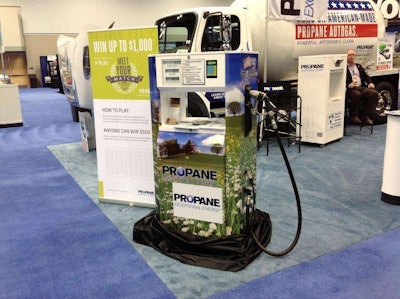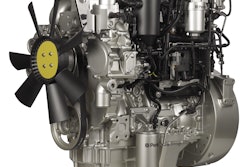 Credit: Bruce Smith
Credit: Bruce Smith
Propane was on prominent display at The Work Truck Show in Indianapolis this week with eight propane exhibitors and 14 propane-powered trucks scattered across the showroom floor.
Among the trucks on hand was a Schwann’s grocery delivery truck. The company has been using propane for 40 years and now has 400 depots and 300 fueling stations.
“He’s lived with it through the evolution, literally,” Mike Taylor, director of autogas business development for The Propane Education & Research Council says.
Propane power has found a foothold in school transportation with two purpose built Bluebird models.
“We’re at 10 percent penetration of new bus sales in Type C for this year,” Taylor adds. “That’s over 10,000 units in a year. We’re going to go easily past 10,000 vehicles this next year. Some projections say we’ll double that. Personally, I think we’ll triple it.”
Ford’s Roush Clean Tech has launched 14 propane-powered trucks and later this year, in a partnership with Freightliner, the propane industry expects to parade out its first Class 7 vehicle and its first diesel-based engine.
“We’re developing a portfolio that fleet managers can embrace,” Taylor says.
Retrofitting an engine requires new fuel lines, injectors, wiring and assorted combustion components including the controller but it’s far from a total overhaul, Taylor says.
“From a component standpoint, we’re using the automotive technology, we’re simply replacing gasoline with propane,” he says.
Roush Clean Tech’s Rob Little says retrofitting a traditional fuel chassis takes approximately 8 hours and propane component installation follows their gasoline counterparts.
“Our fuel likes take the same exact symmetry as the existing lines,” he says. “Take off and put back on in the same spot.”
The secondary market is just now emerging, Little says, citing a strong used propane truck market in Mexico.
“They’re not spending $60,000 on a vehicle like this, but they’ll spend 10 or 20-grand for a vehicle with 200,000 miles on it.”
Typical payback on a propane conversion – which can be refueled at a rate of eight gallons per minute – is 18-24 months on 20,000 miles per year, which do not include federal incentives and tax breaks on purchases of green vehicles.










